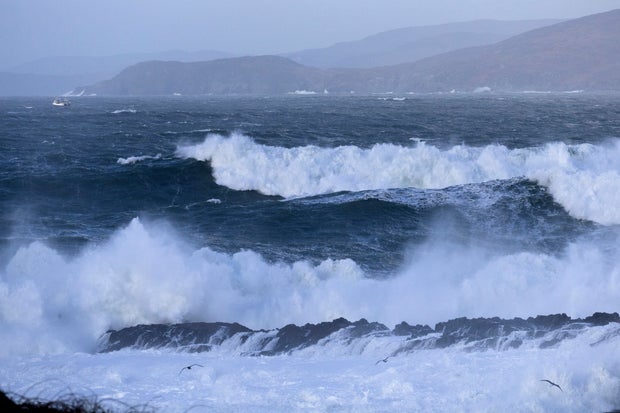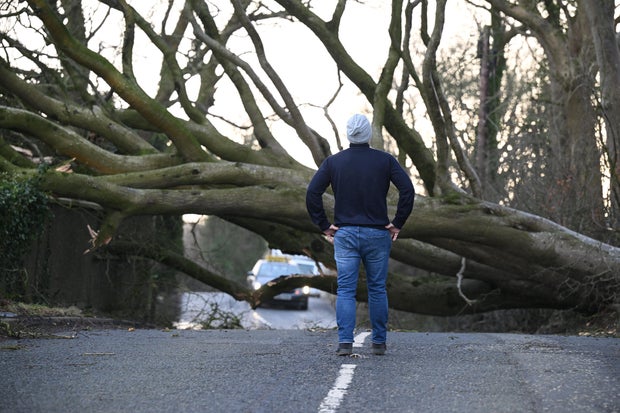Ireland, Western UK hit record winds as storm éowyn shuts down transport, leaves thousands without power

London – Record the winds that hit Ireland, northern Ireland and parts of the Mainland UK on Friday, when bad gales are expected to spread across the region, as the Isles are covered by Scotland, as the Isles are covered by storm ÉoWyn.
Met Éirean, the Republic of Ireland’s Meteorological Service, said the country was lashed by wind gusts of up to 114 mph in County Galway – the highest ever recorded on the island.
The Republic of Ireland was under a ‘red alert’ for its meteorological situation – the public was warned that the storm was ‘extremely destructive and extremely dangerous and dangerous.’
Johannes Ezele / AFP / GETTY
ESB Networks, the government body responsible for most of Ireland’s electricity grids, on Friday morning so that more than 715,000 homes, farms and businesses were left without power due to the storm. More power outages are expected throughout Friday, the ESB said.
More than 230 flights scheduled to depart or arrive at Dublin Airport were canceled on Friday morning due to bad weather, and all public transport was suspended across Ireland as government officials warned the public to stay indoors.
Photographs by Charles Mcquillan/Getty Images
The UK’s joint office said on Friday that similar Red Research notices were in place in northern Ireland and Scotland.
Gusts of more than 90 mph were recorded in Northern Ireland and parts of northern Wales on Friday morning as storm éowyn moved into the United Kingdom. Many trains and other public transport options have been closed in the north of the UK and there have been initial reports of wind and building damage.
“Storm “Anyone in these red and arber warning areas should listen to advice from local responders and keep up to date with weather warnings for their area.”
The most red warnings in the UK, indicating a possible threat to life, covering Ireland covered in the north and Northern England and the south of England and Central Scotland, but the area used for Amber, indicating the possible danger of flying debris, covered a very wide area, extending south to Manchester and Liverpool .






